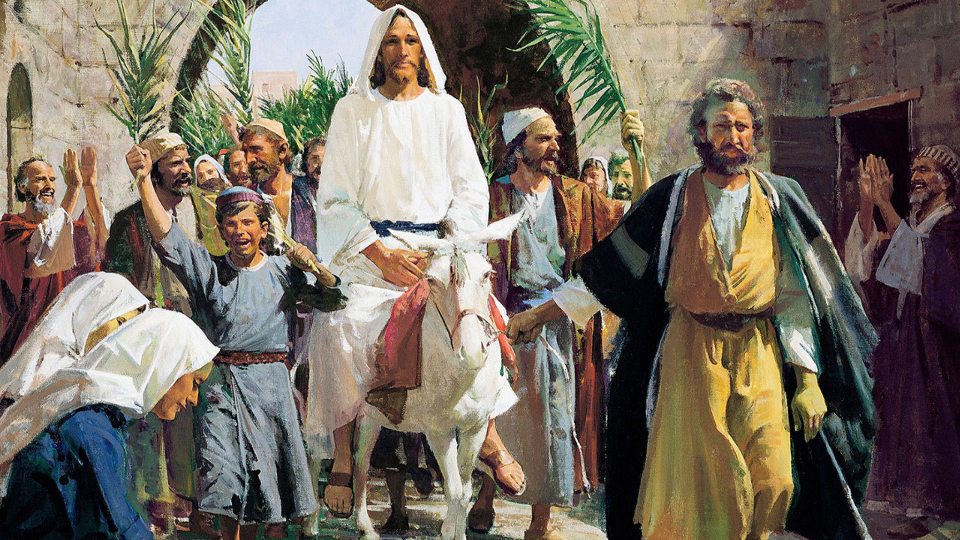Who is this Jesus of which all the world speaks? At the time of His mortal ministry a great variety of opinions prevailed at one time or another. At the moment of Palm Sunday, however, popular opinion aligned in the positive column. Authorities chafed, but the people believed he was at the very least a great rabbi, healer, worker of miracles, and perhaps even a Messiah. Whether they were believers in His divinity or not, whether they thought of Him as a Savior from Roman political and military oppression, or whether He was, instead, to save from something more eternally consequential, they bestowed upon Him a triumphal Passover-week entry into the Temple city, with the traditional markers of Hebrew royalty: the colt of a donkey, the palm leaves, and the shouts of Hosanna. This fulfilled prophecy in scripture.
Before the week ended, this Figure of intense popularity would suffer an ignominious death on the cross, His followers in hiding, and with nearly all popular support entirely evaporated. He trod the winepress alone. He didn't fulfill their expectation of the role of the Messiah. The bulk of the people had misinterpreted the words, the works, and even the Being of the Great I Am.
He was the heir to the throne of David by two separate reckonings of His earthly lineage. But the people's use of palm branches as symbolic of His kingship mostly mistook his purpose as earthly. Instead, He gave us new symbols of an eternal victory engraved on the anatomical site from which the tree etymologically draws its name: His palms. The cares of this mortal world influence us, increase or decrease our liberty, or our suffering. But He didn't come to defeat Caesar, but rather sin, a far more lasting source of misery and slavery.
Which palms deserve our worshipful meditation on a Palm Sunday like today? I choose the latter.
But in doing so today, my mind felt moved toward another similar symbolic mistaking. Just as the Jews at Jerusalem used the perfect imagery while missing the deeper point, I wonder if we sometimes, as members of His Church, don't miss the deeper point when we speak of the Plan of Salvation.
Ask anyone over the age of 8 what the Plan of Salvation is, and they're likely to ask for a piece of paper so they can draw it for you. It's become such an instant codeword that we feel satisfied laying it out as if it's self explanatory, or at least it gives us some visual aids with which to sketch out God's broad cosmic chronology and discuss His purposes for His children as they traverse its various spheres and barriers. It's often schematically laid out below.

_(2).jpg/800px-Mormon_plan_of_Salvation_diagram_(English)_(2).jpg)

No comments:
Post a Comment